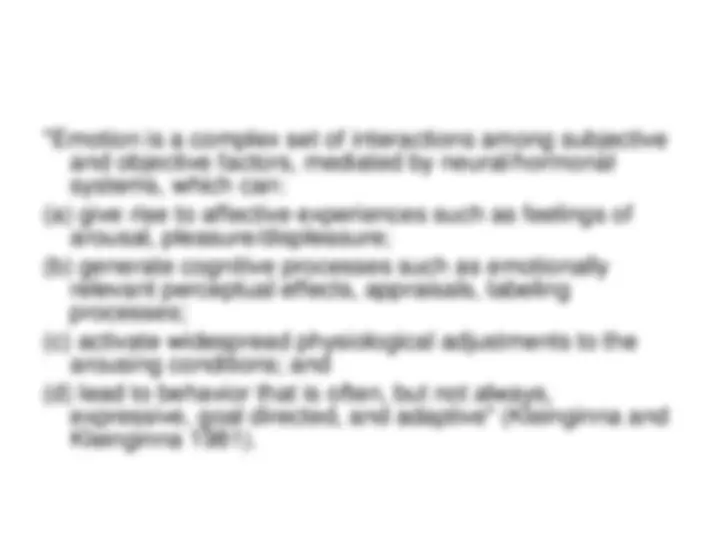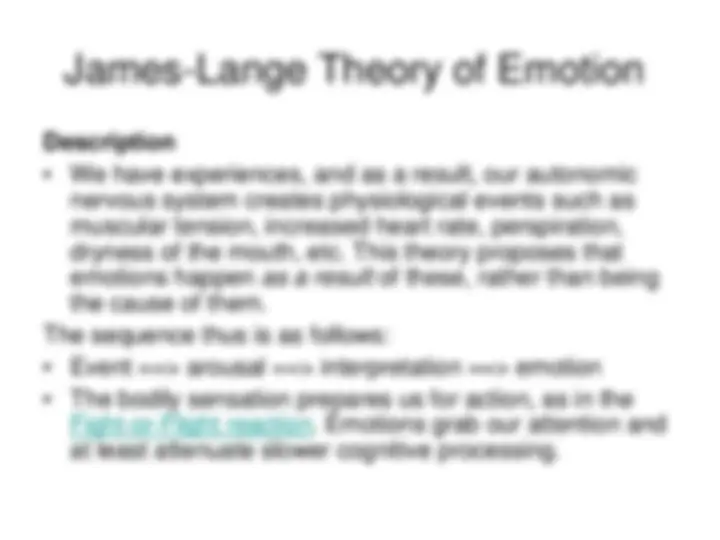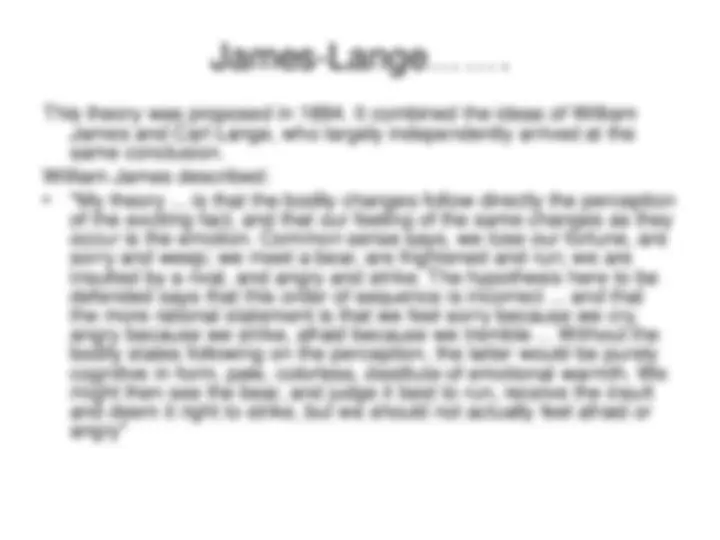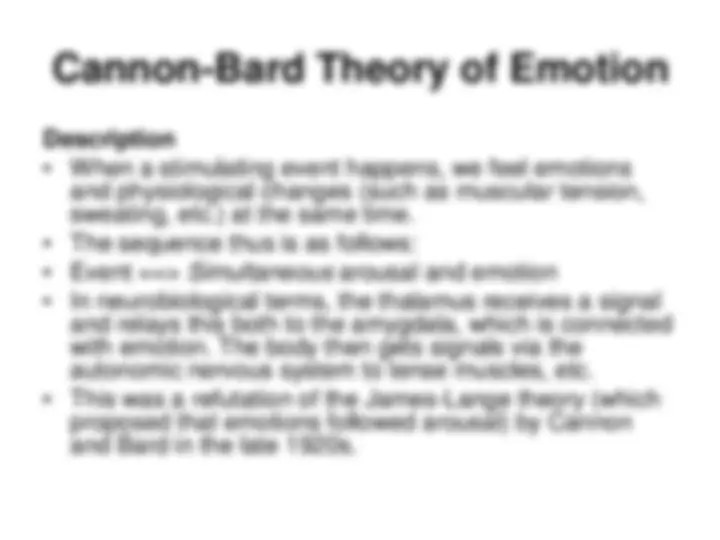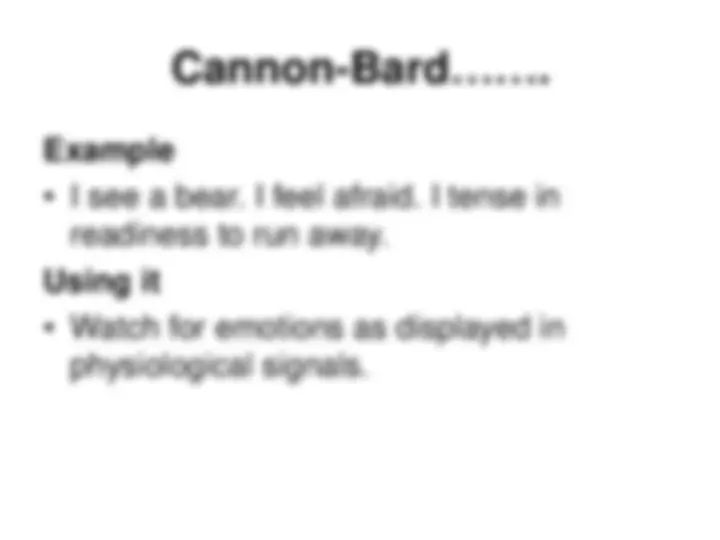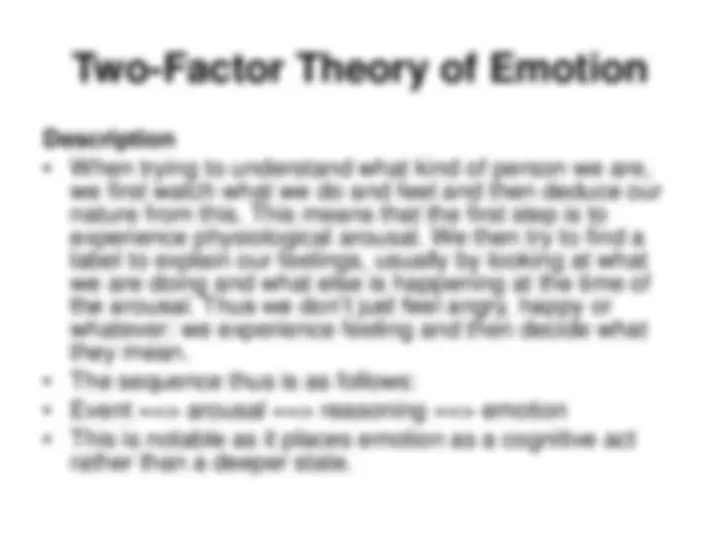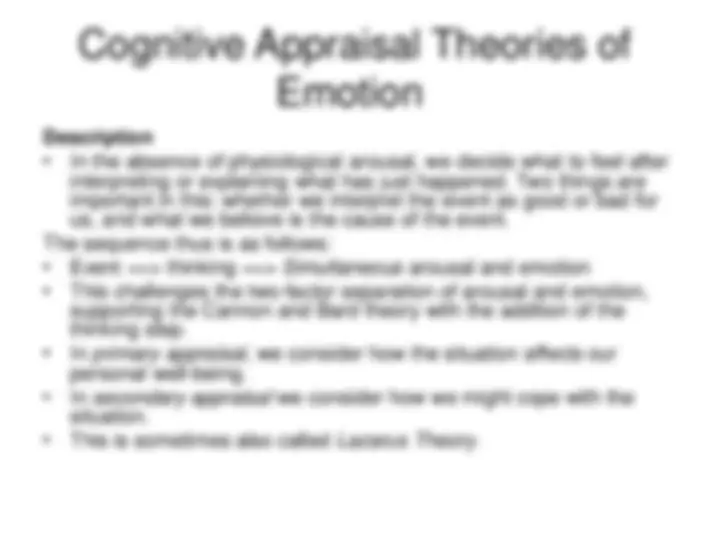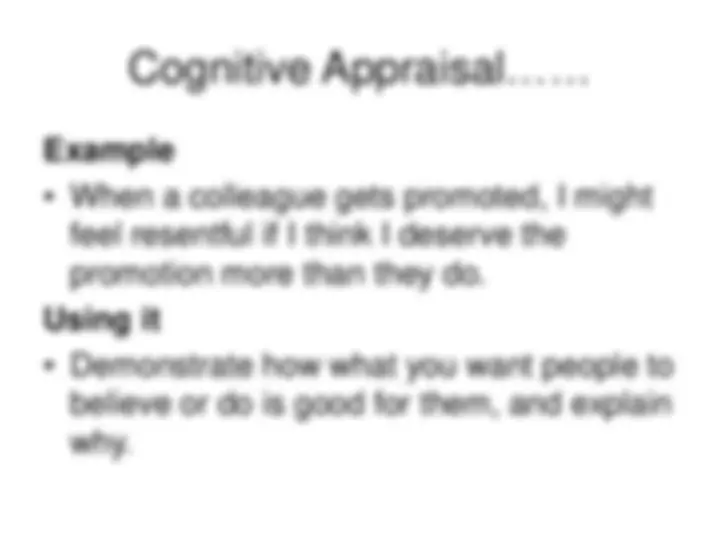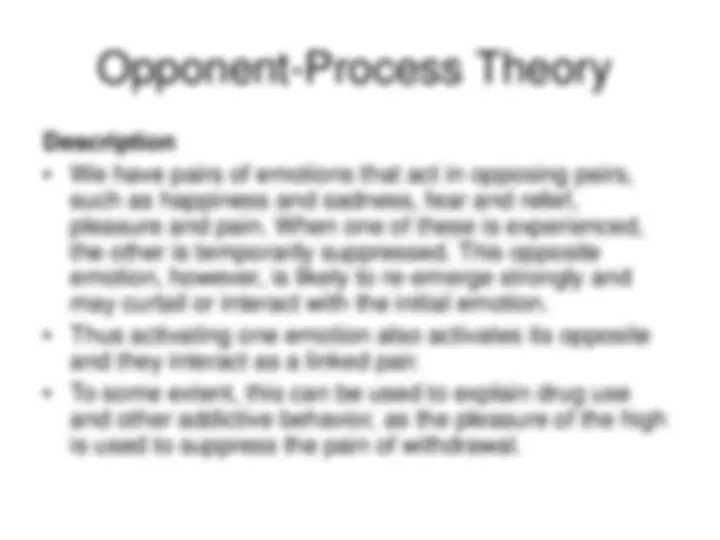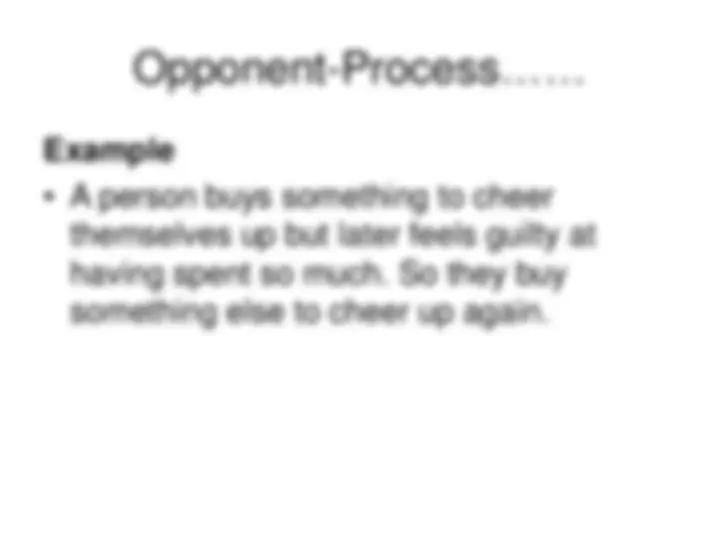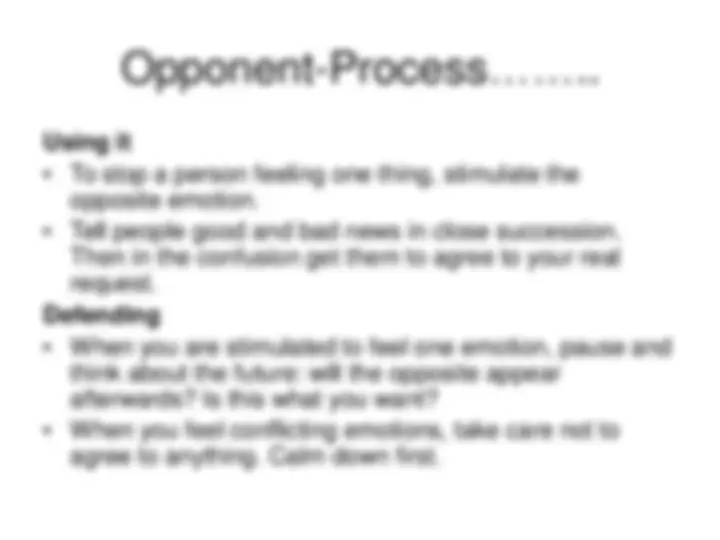Download Understanding Emotions: A Comprehensive Look at General Psychology and Theories of Emotion and more Slides Social Psychology of Emotion in PDF only on Docsity!
Emotion Degree Course (Three Years) Psychology Honours B. A. Part– I Honours Paper I : GENERAL PSYCHOLOGY Unit 7 by Dr. Rukhsana Praveen Ph. D Professor of Psychology Ram Ratan Singh College, Mokama Patliputra University, Patna
- One broad definition is given by Kleinginna
and Kleinginna (1981). They gathered,
analyzed and classified 92 definitions and
9 skeptical statements about the concept
of emotion concluding that there is little
consistency among definitions and many
are too vague. Therefore, the researchers
suggested a comprehensive definition:
James-Lange Theory of Emotion Description
- We have experiences, and as a result, our autonomic nervous system creates physiological events such as muscular tension, increased heart rate, perspiration, dryness of the mouth, etc. This theory proposes that emotions happen as a result of these, rather than being the cause of them. The sequence thus is as follows:
- Event ==> arousal ==> interpretation ==> emotion
- The bodily sensation prepares us for action, as in the Fight-or-Flight reaction. Emotions grab our attention and at least attenuate slower cognitive processing.
James-Lange……. This theory was proposed in 1884. It combined the ideas of William James and Carl Lange, who largely independently arrived at the same conclusion. William James described:
- "My theory ... is that the bodily changes follow directly the perception of the exciting fact, and that our feeling of the same changes as they occur is the emotion. Common sense says, we lose our fortune, are sorry and weep; we meet a bear, are frightened and run; we are insulted by a rival, and angry and strike. The hypothesis here to be defended says that this order of sequence is incorrect ... and that the more rational statement is that we feel sorry because we cry, angry because we strike, afraid because we tremble ... Without the bodily states following on the perception, the latter would be purely cognitive in form, pale, colorless, destitute of emotional warmth. We might then see the bear, and judge it best to run, receive the insult and deem it right to strike, but we should not actually feel afraid or angry"
James-Lange…….
Example
- I see a bear. My muscles tense, my heart races.
I feel afraid.
Using it
- Watch people's physiological signals (facial
color, etc.) and deduce what emotions will result.
Defending
- Notice your own physical feelings and muse
about how these lead to emotion. If you could
relax deliberately, would you feel better?
Cannon-Bard Theory of Emotion Description
- When a stimulating event happens, we feel emotions and physiological changes (such as muscular tension, sweating, etc.) at the same time.
- The sequence thus is as follows:
- Event ==> Simultaneous arousal and emotion
- In neurobiological terms, the thalamus receives a signal and relays this both to the amygdala, which is connected with emotion. The body then gets signals via the autonomic nervous system to tense muscles, etc.
- This was a refutation of the James-Lange theory (which proposed that emotions followed arousal) by Cannon and Bard in the late 1920 s.
Two-Factor Theory of Emotion Description
- When trying to understand what kind of person we are, we first watch what we do and feel and then deduce our nature from this. This means that the first step is to experience physiological arousal. We then try to find a label to explain our feelings, usually by looking at what we are doing and what else is happening at the time of the arousal. Thus we don’t just feel angry, happy or whatever: we experience feeling and then decide what they mean.
- The sequence thus is as follows:
- Event ==> arousal ==> reasoning ==> emotion
- This is notable as it places emotion as a cognitive act rather than a deeper state.
Two-Factor………
- Schachter and Singer (1962) gave some people
a mild stimulant and others a placebo (on a
pretence of testing vitamins). They then gave
them a questionnaire containing rather personal
questions. A stooge in the room got angry at the
questionnaire and the people who had been
given the stimulant (and who hence felt aroused)
got even angrier (the people with the placebo
were not that angry).
Cognitive Appraisal Theories of Emotion Description
- In the absence of physiological arousal, we decide what to feel after interpreting or explaining what has just happened. Two things are important in this: whether we interpret the event as good or bad for us, and what we believe is the cause of the event. The sequence thus is as follows:
- Event ==> thinking ==> Simultaneous arousal and emotion
- This challenges the two-factor separation of arousal and emotion, supporting the Cannon and Bard theory with the addition of the thinking step.
- In primary appraisal , we consider how the situation affects our personal well-being.
- In secondary appraisal we consider how we might cope with the situation.
- This is sometimes also called Lazarus Theory.
Cognitive Appraisal……
Example
• When a colleague gets promoted, I might
feel resentful if I think I deserve the
promotion more than they do.
Using it
• Demonstrate how what you want people to
believe or do is good for them, and explain
why.
Opponent-Process……..
- Sometimes these two conflicting emotions may
be felt at the same time as the second emotion
intrudes before the first emotion wanes. The
result is a confusing combined experience of two
emotions being felt at the same time that
normally are mutually exclusive. Thus we can
feel happy-sad, scared-relieved, love-hate, etc.
This can be unpleasant but as an experiential
thrill it can also have a strangely enjoyable
element (and seems to be a basis of
excitement).
Opponent-Process…….
• Solomon and Corbit ( 1974 ) analyzed the
emotions of skydivers. Beginners
experienced extreme fear in their initial
jump, which turned into great relief when
they landed. With repeated jumps, the fear
of jumping decreased and the post-jump
pleasure increased.
Opponent-Process……..
Using it
- To stop a person feeling one thing, stimulate the opposite emotion.
- Tell people good and bad news in close succession. Then in the confusion get them to agree to your real request. Defending
- When you are stimulated to feel one emotion, pause and think about the future: will the opposite appear afterwards? Is this what you want?
- When you feel conflicting emotions, take care not to agree to anything. Calm down first.

